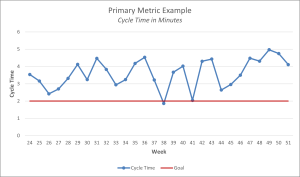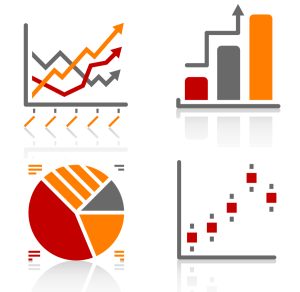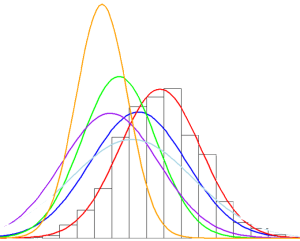Posts by Lean Sigma Corporation
Takt Time Calculator
InputsDemand per Day (Units)*Work Shifts / Day*Hours / Shift*Break Time / Shift*Lunch Time / Shift*Planned Downtime / Shift*OutputsNet Available Time per Shift (Minuets)Net Available Time per Shift (Seconds)Net Available Time per Day (Seconds)Takt Time (Seconds per Unit)PhoneThis field is for validation purposes and should be left unchanged. Go Deeper With Takt Time! Check out This…
Read MoreImportance of the Six Sigma Primary Metric
Six Sigma Primary Metric Primary Metric: The Six Sigma Primary Metric is mandatory! How does one know if a project does what it sets out to do? Every project must choose the right metrics to determine success. Primary metrics are the center point for the work to ensure that the direction and decisions made throughout…
Read MoreSix Sigma Metrics
Six Sigma Metrics Six Sigma practitioners use many Six Sigma metrics and/or measures of performance. In addition to the ones we will cover here, several others (Sigma level, Cp, Cpk, Pp, Ppk, takt time, cycle time, utilization, etc.) will be covered in other articles. The Six Sigma metrics of interest in the Define phase are:…
Read MoreWhat is Six Sigma?
What is Six Sigma or Lean Six Sigma What is Six Sigma or what is today known as “Lean Six Sigma”? It is a data-driven methodology and process improvement approach that combines Lean and Six Sigma elements. It aims to improve organizational processes’ efficiency, quality, and effectiveness. Here’s a breakdown of the two components: Lean…
Read MoreWhat is Sigma in Six Sigma?
The Greek Letter Sigma σ The Greek letter sigma (σ), in both its uppercase and lowercase forms, holds profound significance in various domains, including mathematics and the renowned Six Sigma methodology. The meaning of sigma and its symbol represents mathematical concepts AND embodies the pursuit of perfection and quality that is the heart of the…
Read MoreUnlocking Success: Why Licensing Six Sigma Content from Lean Sigma Corporation is a Game-Changer
Introduction: We understand the importance of driving operational excellence and achieving sustainable growth at Lean Sigma Corporation. That’s why we offer licensing opportunities for our comprehensive Six Sigma content. If you want to empower your organization with the tools and knowledge needed to thrive, licensing Six Sigma content from Lean Sigma Corporation is a strategic…
Read MoreUsing a Cause and Effect Diagram
Introduction: Cause and Effect Diagrams, also known as Fishbone Diagrams or Ishikawa Diagrams, are valuable tools used to identify and analyze the root causes of a problem or an effect. In this comprehensive guide, we will delve into the essence of Cause and Effect Diagrams, explore their origins, highlight their various names, elucidate their applications,…
Read MoreUsing a Cause and Effect Matrix
The Cause and Effect Matrix is in a family of tools referred to as “experiential tools” because these types of tools draw upon the experience of subject matter experts. The Cause & Effect Matrix allows organizations to understand the relationships between various factors contributing to specific outcomes or effects. Also known as the C&E Matrix…
Read MoreAdd Your Lean Six Sigma Certification to Your LinkedIn Profile
Add Your Lean Six Sigma Certification on LinkedIn and Get my Free “Learn Six Sigma” eBook Did you know you can add your Lean Six Sigma certification to your LinkedIn profile? And if you do, send me a link to your profile with your certification added and I’ll personally send you a complimentary copy of…
Read MoreLean Sigma Corporation Approved as Registered Education Provider by Project Management Institute
Charlotte, North Carolina, USA – March 28, 2016 Lean Sigma Corporation today announces that the Project Management Institute (PMI), the world’s largest project management member association, has named it as a Registered Education Provider (R.E.P.) effective April 1, 2016 R.E.P.s are organizations that have been approved by PMI to help project managers achieve and maintain…
Read MoreEWMA Chart with JMP
What is EWMA Chart? The EWMA chart (Exponentially-Weighted Moving Average Chart) is a control chart monitoring the exponentially-weighted average of previous and present subgroup means. The more recent data get more weight than older data. It detects the shift of the process mean from the process target over time. The underlying distribution of the EWMA…
Read MoreEWMA Chart with Minitab
What is an EWMA Chart? The EWMA chart (Exponentially-Weighted Moving Average Chart) is a control chart monitoring the exponentially-weighted average of previous and present subgroup means. The more recent data get more weight than older data. It detects the shift of the process mean from the process target over time. The underlying distribution of the…
Read MoreCumSum Chart with JMP
What is a CumSum Chart? The CumSum chart (also called cumulative sum control chart or CUMSUM chart) is a control chart of monitoring the cumulative sum of the subgroup mean deviations from the process target. It detects the shift of the process mean from the process target over time. The underlying distribution of the CumSum…
Read MoreCumSum Chart with Minitab
What is a CumSum Chart? The CumSum chart (also called cumulative sum control chart or CUSUM chart) is a control chart of monitoring the cumulative sum of the subgroup mean deviations from the process target. It detects the shift of the process mean from the process target over time. The underlying distribution of the CuSum…
Read MoreCreating an NP Chart with JMP
Creating an NP Chart with JMP What is NP Chart with JMP? The NP chart with JMP is a control chart monitoring the count of defectives using JMP statistical software to produce the results. It plots the number of defectives in one subgroup as a data point. The subgroup size of the NP chart is…
Read MoreNP Chart with SigmaXL
What is an NP Chart with SigmaXL? The NP chart with SigmaXL is a control chart monitoring the count of defectives. It plots the number of defectives in one subgroup as a data point. The subgroup size of the NP chart is constant. The underlying distribution of this control chart is binomial distribution. Plot an…
Read MoreNP Chart with Minitab
What is a NP Chart? The NP chart is a control chart monitoring the count of defectives. It plots the number of defectives in one subgroup as a data point. The subgroup size of the NP-chart is constant. The underlying distribution of this control chart is binomial distribution. Use Minitab to Plot an NP Chart…
Read MoreXbar S Chart with JMP
What is a Xbar S Chart? The X-S chart (also called Xbar S chart) is a control chart for continuous data with a constant subgroup size greater than ten. The Xbar chart plots the average of a subgroup as a data point. The S chart plots the standard deviation within a subgroup as a data…
Read MoreXbar S Chart with SigmaXL
What is a Xbar S Chart with SigmaXL? The Xbar S chart with SigmaXL (also called X-S chart) is a control chart for continuous data with a constant subgroup size greater than ten. The Xbar chart plots the average of a subgroup as a data point. The S chart plots the standard deviation within a…
Read MoreXbar S Chart with Minitab
What is a Xbar S Chart? The X-S chart (also called Xbar S chart) is a control chart for continuous data with a constant subgroup size greater than ten. The Xbar chart plots the average of a subgroup as a data point. The S chart plots the standard deviation within a subgroup as a data…
Read More





